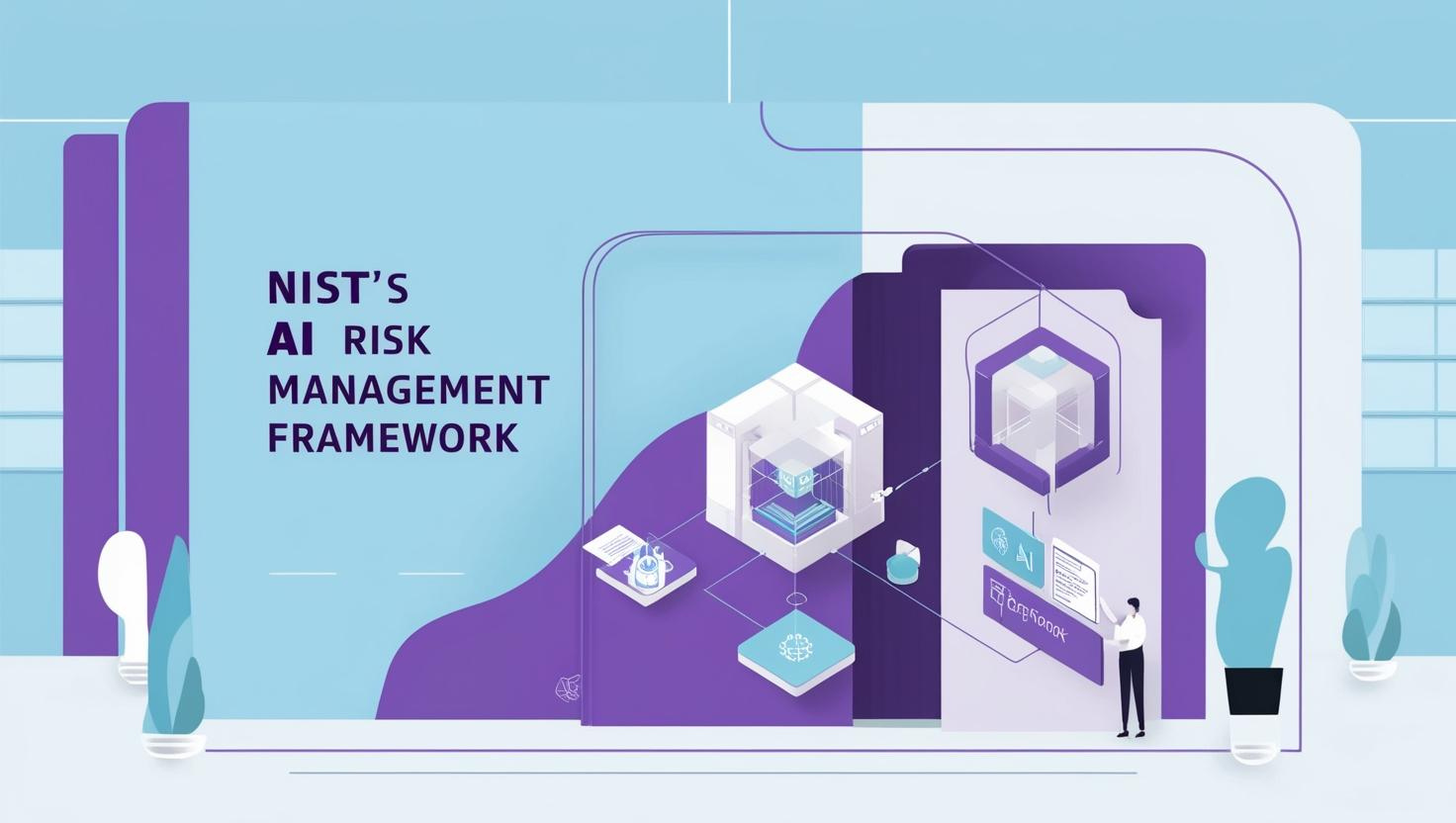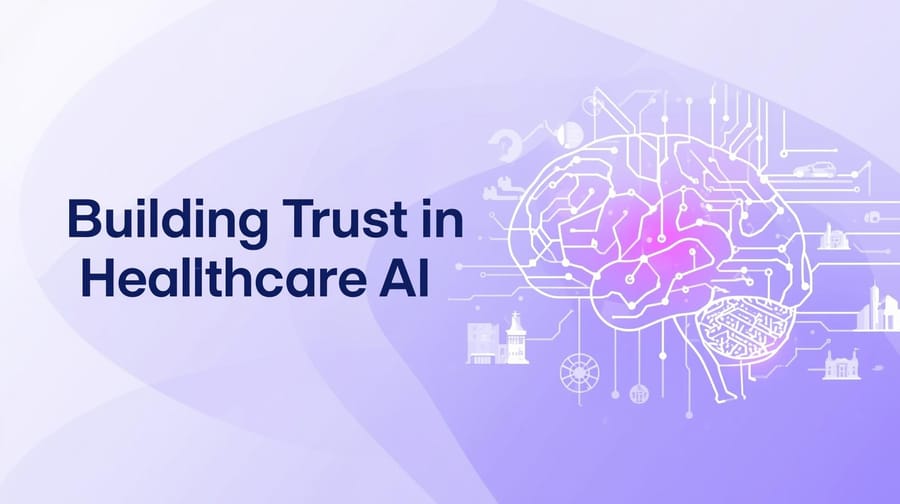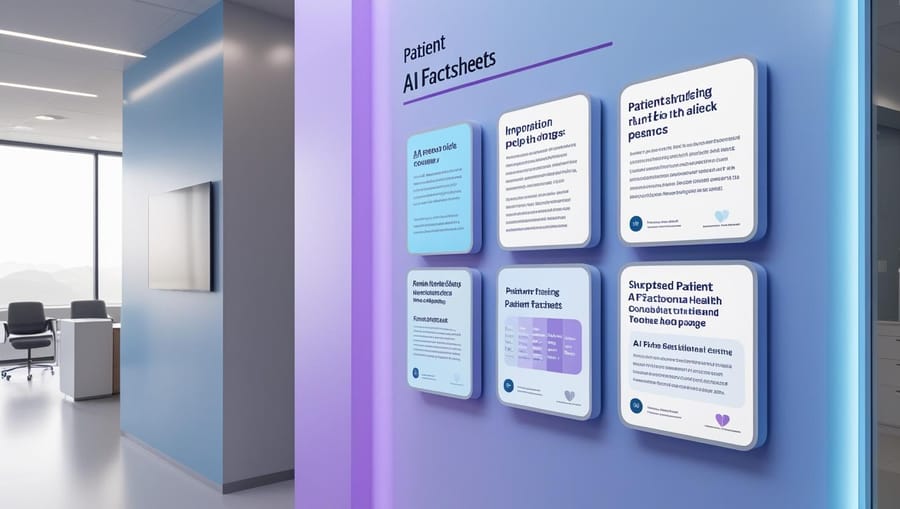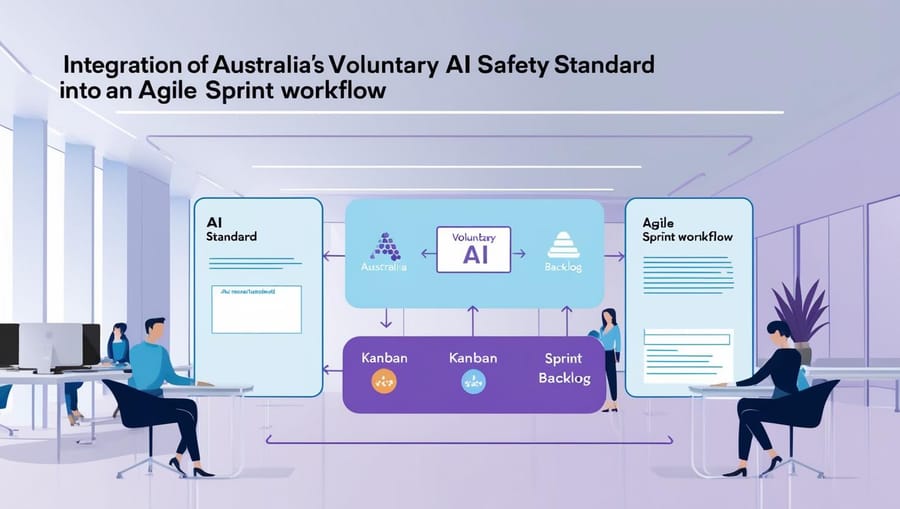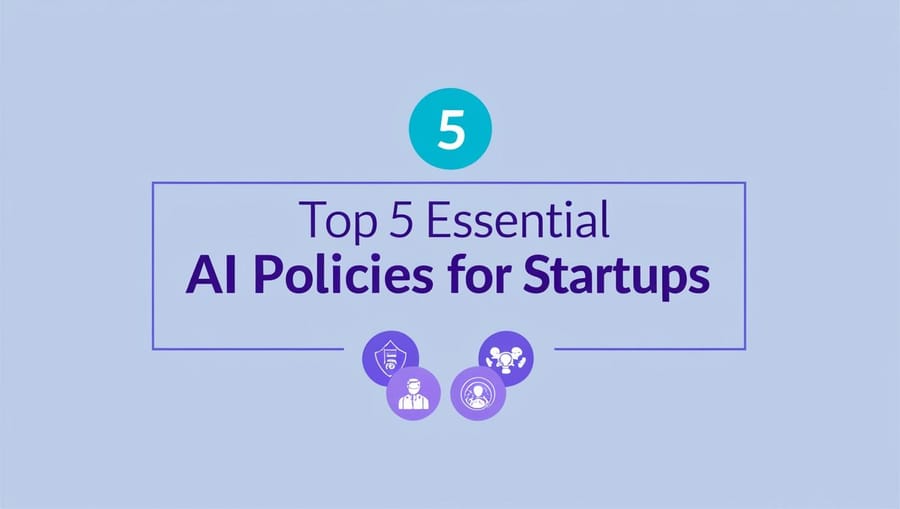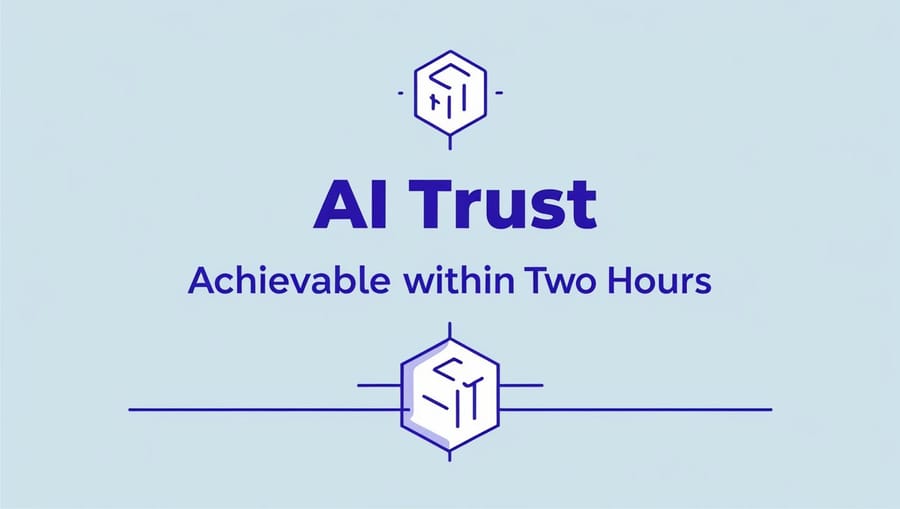Introduction: Why AI Risk Management Matters
Artificial Intelligence (AI) is rapidly transforming industries, driving efficiencies in finance, healthcare, cybersecurity, and human resources. However, with its increasing adoption comes significant risks—bias, security vulnerabilities, lack of transparency, and regulatory non-compliance. How can organizations balance innovation with risk management and ethical AI deployment?
To address these concerns, the National Institute of Standards and Technology (NIST) developed the AI Risk Management Framework (AI RMF)—a voluntary, flexible guide to help organizations identify, measure, and mitigate AI-related risks. In this guide, we break down NIST’s AI RMF and offer practical steps for implementing it in your business.
1. What is NIST’s AI Risk Management Framework (AI RMF)?
The NIST AI RMF is a risk-based framework designed to help organizations govern, assess, and manage AI risks while promoting the development of trustworthy AI systems. Unlike the EU AI Act, which is a legally binding regulation, NIST AI RMF serves as a voluntary framework to guide AI risk management in a structured yet adaptable way.
Key Objectives of NIST AI RMF:
✅ Minimize AI Risks: Address bias, security threats, and ethical concerns.
✅ Promote Trustworthy AI: Ensure AI systems are explainable, transparent, and accountable.
✅ Provide a Flexible Approach: Adaptable for different industries, AI applications, and risk levels.
🔹 Example: A U.S.-based financial institution deploying AI for fraud detection follows NIST AI RMF to identify bias risks in transaction approvals and improve decision transparency.
2. The Core Functions of NIST AI RMF
NIST AI RMF is built around four core functions that organizations should integrate into their AI governance strategies.
🔹 1. Govern: Establish AI Governance Structures
- Define roles, responsibilities, and oversight mechanisms for AI governance.
- Align AI governance policies with organizational risk tolerance and ethical guidelines.
- Implement AI incident response plans to address unexpected failures.
🔹 Example: A healthcare provider using AI for diagnostics creates an AI ethics board to ensure compliance with medical regulations.
🔹 2. Map: Identify AI Risks and Categorize Use Cases
- Assess AI applications based on potential risks, such as bias, security vulnerabilities, and compliance exposure.
- Use AI risk heatmaps to visualize and prioritize high-risk models.
🔹 Example: An AI-powered HR recruitment tool undergoes bias testing to prevent unfair screening based on gender or ethnicity.
🔹 3. Measure: Assess & Quantify AI Risks
- Develop AI risk measurement metrics, including fairness, accuracy, explainability, and robustness.
- Perform bias audits and adversarial testing to identify risks in decision-making.
🔹 Example: A banking AI system measuring credit risk decisions conducts fairness audits to ensure loan approvals are not biased against minority groups.
🔹 4. Manage: Implement AI Risk Mitigation Strategies
- Deploy AI monitoring tools to detect model drift, security threats, and regulatory violations.
- Establish human-in-the-loop (HITL) oversight for high-risk AI applications.
🔹 Example: A cybersecurity AI system continuously tracks fraud patterns and updates security protocols to defend against adversarial attacks.
3. Practical Steps for Implementing NIST AI RMF in Your Organization
Step 1: Establish AI Governance & Compliance Policies
✅ Define AI governance roles and responsibilities.
✅ Align governance policies with NIST AI RMF, ISO 42001, and the EU AI Act.
✅ Ensure board-level oversight for AI risk management.
🔹 Example: A multinational e-commerce company integrates NIST AI RMF into its AI development pipeline, ensuring responsible AI use across regions.
Step 2: Conduct AI Risk Mapping & Assessment
✅ Identify AI models that require high-risk monitoring.
✅ Use AI risk heatmaps to track AI system vulnerabilities.
✅ Develop an AI incident response plan for unexpected failures.
🔹 Example: A financial institution maps AI-driven lending models to assess fairness risks and regulatory exposure.
Step 3: Implement AI Risk Measurement & Monitoring
✅ Conduct regular bias, fairness, and security audits.
✅ Use AI explainability tools like SHAP, LIME, and counterfactual explanations.
✅ Automate compliance tracking through AI risk dashboards.
🔹 Example: A healthcare AI model measuring cancer detection outcomes undergoes bias testing to ensure equitable accuracy across different demographic groups.
Step 4: Develop AI Risk Mitigation Strategies
✅ Establish human oversight in AI decision-making.
✅ Implement adversarial attack testing for cybersecurity AI.
✅ Set up AI fail-safe mechanisms to prevent unintended consequences.
🔹 Example: A transportation company using AI for autonomous vehicle navigation applies real-time AI monitoring to prevent model drift and maintain safety.
4. Key Challenges in AI Risk Management & How to Overcome Them
AI risk management is a complex and evolving challenge. Organizations implementing AI must identify, measure, and mitigate various risks, including bias, regulatory uncertainty, security threats, and transparency issues. Below are some of the most pressing challenges and practical solutions to overcome them.
🔹 Challenge 1: Regulatory Uncertainty
AI regulations are constantly evolving, with different regions introducing overlapping and sometimes conflicting guidelines. Organizations face difficulties in ensuring compliance with global AI laws such as the EU AI Act, NIST AI RMF, GDPR, and ISO 42001.
✅ Solution: Build a Flexible AI Governance Framework
- Monitor regulatory updates: Implement a compliance tracking system that monitors AI laws across different regions.
- Align with widely accepted frameworks: Adopt AI governance standards such as NIST AI RMF, ISO 42001, and OECD AI Principles for global interoperability.
- Develop internal AI policies: Create AI governance policies that can be quickly adapted to new regulations.
🔹 Example: A multinational AI company ensures regulatory compliance by automating legal updates and integrating regional AI compliance dashboards.
🔹 Challenge 2: Bias & Fairness Risks
AI models can inadvertently learn and reinforce biases, leading to unfair or discriminatory outcomes. This is especially critical in finance, hiring, healthcare, and law enforcement, where AI decisions directly impact individuals.
✅ Solution: Implement Bias Detection & Fairness Audits
- Use diverse training datasets: Ensure datasets represent different demographics to avoid biased model outputs.
- Conduct regular fairness audits: Use AI fairness tools such as IBM AI Fairness 360 and Google’s What-If Tool to detect and mitigate bias.
- Adopt human-in-the-loop (HITL) validation: Involve human reviewers in high-risk AI decisions to override biased AI outputs.
🔹 Example: A large hiring platform discovered that its AI screening system favored male candidates due to historical biases in hiring data. The company implemented fairness audits and dataset corrections to ensure equitable candidate selection.
🔹 Challenge 3: AI Model Drift & Performance Degradation
AI models are not static—they evolve over time based on new data. Without continuous monitoring, AI systems may experience "model drift," where predictions become less accurate or misaligned with real-world conditions.
✅ Solution: Implement Continuous AI Monitoring & Retraining
- Deploy real-time AI monitoring systems: Track AI performance metrics, including accuracy, fairness, and drift detection.
- Schedule periodic AI retraining: Update models with new, unbiased, and relevant data to maintain performance.
- Use AI risk heatmaps: Identify models at risk of performance degradation and bias over time.
🔹 Example: A fraud detection AI model used by a bank started missing new fraud patterns due to changing tactics by fraudsters. The bank retrained the model every quarter using updated transaction data to maintain effectiveness.
🔹 Challenge 4: AI Security & Adversarial Attacks
AI systems are vulnerable to cyber threats, such as data poisoning, adversarial attacks, and model inversion. Attackers can manipulate AI models to produce false results or leak sensitive information.
✅ Solution: Strengthen AI Security with Robust Defenses
- Adversarial testing: Conduct penetration testing on AI models to simulate attacks and detect vulnerabilities.
- Secure AI training data: Use encrypted and tamper-proof datasets to prevent data poisoning.
- Deploy AI security monitoring tools: Continuously analyze AI behavior for suspicious activities and anomalies.
🔹 Example: A facial recognition AI system was tricked using adversarial patches (specialized images designed to fool AI). To counteract this, the company implemented adversarial training techniques to harden its model against attacks.
🔹 Challenge 5: Lack of Explainability & Transparency
Many AI models, especially deep learning models, function as black boxes, making it difficult to understand how they make decisions. This lack of explainability can reduce trust, increase regulatory scrutiny, and lead to compliance risks.
✅ Solution: Adopt Explainable AI (XAI) Techniques
- Use AI interpretability tools: Implement SHAP (Shapley Additive Explanations), LIME (Local Interpretable Model-Agnostic Explanations), and counterfactual explanations.
- Require model documentation: Maintain records of AI decision-making processes for regulatory audits and internal reviews.
- Integrate transparency reporting: Develop AI systems with built-in explainability dashboards that allow users to understand AI-driven outcomes.
🔹 Example: A credit scoring AI model used by a bank was flagged for discriminatory lending decisions. By integrating SHAP explainability tools, the bank was able to justify AI-driven credit approvals and denials, ensuring compliance with Fair Lending Regulations.
🔹 Challenge 6: Ethical AI Concerns & Public Trust Issues
AI adoption faces ethical dilemmas related to data privacy, surveillance, and automated decision-making. Without strong ethical AI policies, organizations risk losing consumer trust and facing reputational damage.
✅ Solution: Implement Ethical AI Frameworks & Stakeholder Engagement
- Develop AI ethics committees: Involve legal experts, ethicists, and industry professionals to evaluate AI risks.
- Ensure AI decision accountability: Assign responsibility for AI decisions to specific roles within the organization.
- Engage with external stakeholders: Partner with regulators, civil rights groups, and research institutions to develop AI policies that promote fairness and social responsibility.
🔹 Example: A retail AI recommendation engine was criticized for aggressively targeting vulnerable consumers. The company revised its AI ethics policy to ensure that its recommendation algorithms did not exploit users’ psychological profiles.
5. Learnings from Practical Implementations of NIST AI RMF
🔹 Establishing Robust Governance Structures
Organizations have found that setting up dedicated AI governance bodies enhances oversight and accountability. For instance, Workday established an AI Advisory Board comprising senior leaders to oversee its AI initiatives, ensuring alignment with ethical standards and regulatory requirements.
✅ Workday’s AI Advisory Board oversees AI initiatives, ensuring ethical compliance and risk mitigation.
🔹 Conducting Comprehensive Risk Assessments
Implementing thorough risk assessments is crucial. IBM adopted a three-phase approach to align its internal risk management practices with the NIST AI RMF, starting with a comprehensive analysis to identify gaps and areas for improvement.
✅ IBM adopted a structured approach to aligning risk management with NIST AI RMF, identifying key compliance gaps.
🔹 Enhancing Interdepartmental Collaboration
Effective AI risk management requires collaboration across various departments. The NIST AI RMF emphasizes the importance of such collaboration to identify issues and ensure compliance with evolving regulations.
✅ Organizations found that cross-departmental cooperation improves AI risk identification and compliance monitoring.
🔹 Prioritizing Continuous Improvement
Organizations benefit from viewing AI risk management as an ongoing process. Adopting the NIST AI RMF encourages continuous improvement and alignment with global standards, enhancing the trustworthiness of AI systems.
✅ NIST AI RMF encourages organizations to evolve AI risk management practices, improving long-term governance.
🔹 Leveraging External Feedback
Incorporating external perspectives into AI system design and implementation enhances robustness. The NIST AI RMF provides guidance on integrating external feedback, highlighting its importance in developing trustworthy AI systems.
✅ External audits and feedback loops enhance AI robustness and trustworthiness.
🔹 Utilizing the NIST AI RMF Playbook
The NIST AI RMF Playbook offers practical resources for organizations to implement the framework effectively. It provides templates and tools that assist in aligning AI risk levels with organizational goals, supporting continuous improvement.
✅ Practical implementation guides help organizations integrate AI risk management principles effectively.
🔹 Engaging in Community Initiatives
Participating in broader community efforts, such as AI red-teaming exercises, helps identify vulnerabilities in AI systems. For example, collaborations between tech companies and the U.S. government have led to initiatives aimed at scrutinizing AI systems for weaknesses, promoting transparency and accountability.
✅ AI red-teaming exercises help identify and mitigate vulnerabilities in AI systems.
5. Future Trends in AI Risk Management & Compliance
🔹 Stronger AI Regulations – Global regulations will converge on AI risk assessment requirements.
🔹 AI Compliance Automation – More enterprises will use AI risk dashboards to automate governance tracking.
🔹 Explainability Mandates – Organizations will be required to document AI decision-making for accountability.
🔹 Example: A global financial services firm uses automated AI compliance monitoring to track bias, security risks, and regulatory adherence in real time.
Final Thoughts: Why NIST AI RMF is Essential for Responsible AI
As AI adoption accelerates, organizations must take proactive steps to manage AI risks. The NIST AI RMF provides a structured yet flexible approach for ensuring AI systems are safe, fair, and transparent.
✅ By integrating NIST AI RMF into AI governance strategies, businesses can enhance trust, minimize compliance risks, and future-proof AI deployments.
✅ Organizations that proactively manage AI risks will outperform competitors and build long-term AI resilience.

